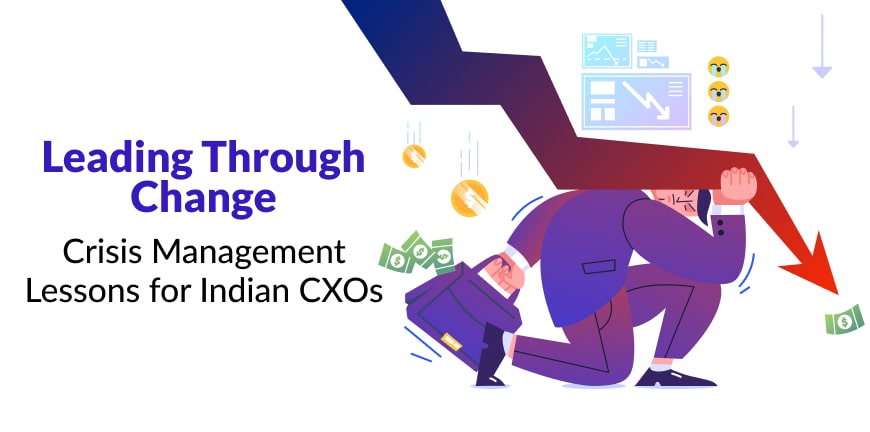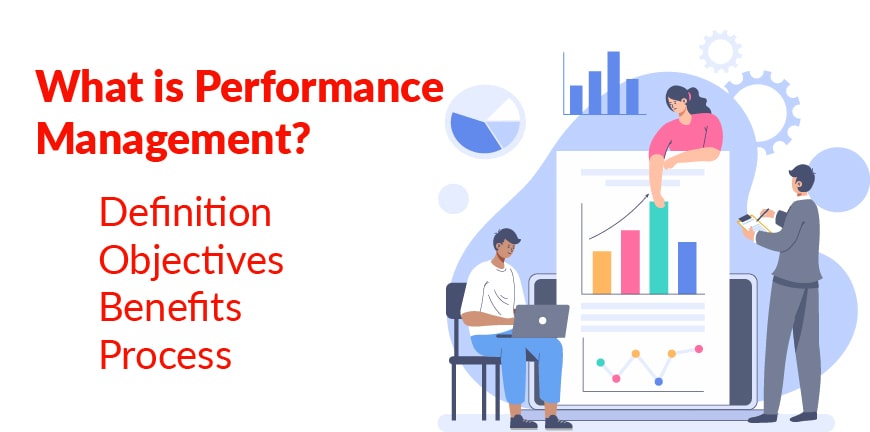
How to Switch Careers Without Starting Over?
26/06/2025
How Japan Startups Can Set Up Teams in India: A Step-By-Step Guide
27/06/2025India’s transforming business landscape in a digital and uncertain era, where volatility and complexities are at their peak. Now is the time the country requires leaders and architects who can craft smart strategies to steer us through the chaos. Unlike earlier days, there is no time or scope for executives to depend on pre-drafted blueprints or forecasts.
Today, situations can pivot overnight or in hours, or even in seconds. Controlling these high-stakes developments and making prompt and intelligent decisions is the new norm for our current CXOs. Crisis is no longer a sudden disruption; it is an underlying component that can trigger at any time. Are our CXOs prepared for the jolt? Can they lead, innovate, and thrive while weathering the storm?
Key Figures and Sectoral Insights
| Metric/Trend | 2024–2025 Data/Insight |
| Crisis Management Market Size | USD 6.9B (2024) → USD 17.9B (2032, projected) |
| Market Growth Rate | 12–13% CAGR (2024–2032) |
| Cybersecurity Incident Drop | 26% reduction by 2025 |
| Healthcare Cyber Attacks Share | 21.8% of all attacks |
| Ed-Tech Crisis Communication | The sector faced major reputational crises in 2024 |
| Leadership Trend | Blended, situational leadership with a focus on communication |
| Use of CBMs in Geopolitics | Hotline diplomacy, third-party mediation vital in 2025 |
Let us explore how our CXOS can guide us through the changing times and lead the way in times of crisis:
1. Embrace Agility and Adaptive Leadership
One lesson that we learnt from the recent crisis scenarios is the urgency to adopt agility. Traditionally, top leadership would have faltered when it came to high-stakes situations.
But now times have changed, and top-tier executives are leaning towards adaptive leadership, which involves quick assessment of scenarios, open to receiving ideas from cross-functional teams, and acting decisively to manage the existing crisis.
We don’t have to look too far back; there is a very recent example that should bring clarity regarding crisis management. The COVID-19 lockdown phases caused massive upheaval; however,
Indian IT and BPO firms took a significant decision, and they swiftly shifted to remote work within days, only due to agile decision-making and command structures that were decentralized. Credit goes to the CXOs who could empower their teams, driving them to act promptly, navigating disruption.
A leadership culture must be designed to embrace innovation, learning from past failures, and fast turns instead of a stringent execution.
2. Situation Planning with Spontaneous Decisions
Organizations and leadership must have a plan ready for unprecedented situations. A critical mistake made by many organizations is failing to gear up for a crisis.
Planning for scenarios way before enables leaders to anticipate future possibilities of threat or danger, so they can formulate strategies to combat them.
The pandemic was an alarm for enterprises worldwide and for Indian organizations, exposing them to the most unlikely and catastrophic situation, teaching CXOs the importance of planning and preparing for events that incur low profits but are high in impact.
Events that can jeopardize everything from operations to the supply chain, affecting productivity and client trust.
Meanwhile, CXOs investing in time and resources in crafting well-drafted business continuity plans (BCPs) were in a better position to manage the debacle.
The solution is for leaders to conduct quarterly sessions on scenario planning with the management and business partners. Design manuals for situations like cyberattacks, financial crises, PR disasters, and other tenable scenarios.
3. Empathetic and Transparent Communication
The lifeline of leadership, when in crisis, is communication. It could be a public health emergency, a data threat, a financial slump, or a reputational setback; individuals will instinctively wait for leaders to guide them.
CXOs in India, especially in high-crisis environments, require the ability to communicate with messages that are clear, empathetic, and uniform.
Employees need to know during a crisis that their job is secured, and if there is any alteration in their situation, their welfare, etc. Good leadership can convey messages that are timely, kind, preventing unnecessary panic while boosting morale and instilling trust.
Customers are keen on knowing whether the crisis will impact the services provided to them, whether the quality will be affected, or not, etc. A confident CXO with honest and transparent communication can keep their doubts at bay.
Similarly, with investors, regulators, and the public, at times of chaos, the best CXOs must be the voice of reason and calm.
Best Practices:
- Provide regular updates
- Acknowledge unpredictability honestly.
- Use jargon-free language.
- Exhibit empathy
4. Digitization is the New Norm
Digital proficiency is vital for organizations at times of crisis, as it showcases how well they confront and recover from crisis.
The integration of cloud infrastructure can be useful as it helps businesses with continuity by facilitating smooth remote access to systems, data, and operations.
AI-driven information can be advantageous for companies, and machine learning could evaluate real-time data, anticipate market changes, and even oversee employee well-being.
During a volatile situation like the pandemic, various digital methods adopted by CXOs and company leaders helped them to cope and even unlock new business opportunities by integrating digital tools and techniques.
However, several Indian manufacturers and traditional sectors that were not well-versed in digitization lagged.
CXOs must make it their priority to invest in robust digital transformation because it enhances efficiency, but as a fundamental component to mitigate risk and ensure business continuity.
5. People Over Processes
As a CXO, your mantra during high-pressure situations is to focus on your manpower, as they can become the backbone of a team during the most vulnerable times. They can serve as an asset supporting you throughout the pandemonium.
A CXO who invests in an employee’s physical and emotional well-being surfaces with robust teams and more intense organizational loyalty.
Indian corporates during the COVID-19 pandemic presented a clear picture when they demonstrated initiatives like executing mental health programs, offering flexible work models, offering paid leaves, and ensuring workplace safety.
Amid a global turmoil, these organizations managed not just to sustain operations but to build a culturally rich environment filled with care and trust. These enterprises reported improved retention, enhanced engagement, and a powerful employer brand.
The invaluable lesson learnt is that a leadership that invests in people is a business move and not just a soft skill.
Employees, when they feel empowered, seen, and respected, can challenge any crisis, survive it, and contribute to the recovery and reformation of the organization post-crisis.
6. Collaboration with Ecosystems is Paramount
An organization cannot function in isolation, no matter how big, especially during a crisis period.
Disruptions often penetrate through ecosystems and various sectors, impacting external entities like suppliers, vendors, partners, regulators, etc. Organizations facing challenges and during situations of unrest need external forces by their side.
To ensure that they need to establish faith-based open collaboration to mitigate risks together as partners, muster resources, and recover swiftly.
Another powerful alliance can be formed if organizations align with competitors during crisis times, acting collectively.
An indomitable display of collaboration was displayed during the unprecedented COVID-19 pandemic.
In India, pharmaceutical firms, logistics companies, cold-chain operators, and central/state governments joined hands, unified, coordinated, and collaborated by shared data, streamlining approvals, synchronizing logistics, and prioritizing vaccine delivery across cities and rural areas.
This model revolutionized the system and helped in surpassing massive logistical hurdles while saving millions.
A good CXO will not wait for a crisis to begin but will foster collaboration with key players in their value chain, building partnerships. Discuss crisis-response methods with external parties like suppliers, distributors, and regulators, etc.
7. Build a Pattern of Continual Learning
After a crisis period ends and normalcy gains momentum, several companies make an error of judgment by moving on too fast, back to regular operations, growth targets, etc, closing the crisis episode for good.
However, organizations must take a beat and take the opportunity to learn, gain insights from the crisis, suggest improvements, encourage feedback on how to improve such situations, and create a plan for future crisis scenarios.
Every crisis unravels a set of underlying issues that could involve ruptured processes, discrepancies in leadership, communication fallouts, cultural forces, and subdued resilience.
But these lessons must be seized, evaluated, and institutionalized before disappearing with the crisis, leaving the enterprise exposed when the next danger strikes.
A high-performing CXO will immediately take control and commit to creating a corporate memory culture based on case studies to fuel it. Continuous improvement.
These leaders analyse aspects like what went awry, what was right, decisions that proved effective, how to prepare better, etc.
The insights become part of an organization’s structure when they are embedded and documented in manuals, training sessions, policies, etc It becomes a true live resource that triggers future responses and accelerates organization-wide strength.
8. Ethical Leadership and Values-Powered Decisions
The ethical compass of an organization is tested during times of crisis, and it is observed how a CXO handles the ethical aspects judiciously.
In moments of high-octane situations where exploitation, cutting, and cutting edges can be tempting and can go unnoticed. But the long-term repercussions could obliterate brand reputations overnight.
Severe backlash was faced by companies that slipped during the pandemic, choosing short-term relief over ethical demeanour.
Actions like misusing government relief funds, withholding pay during the pandemic, sprout from panic and opportunism.
Meanwhile, organizations choosing integrity over convenience stood out, establishing stronger reputations and more intense stakeholder loyalty.
Businesses and CXOs who stuck by salary commitments, kept lines of communication transparent, responsibly, utilized government assistance, and supported their team and community, attained goodwill.
Crisis, the Catalyst for Leadership Evolution
There will be obstacles in the future where CXOs will be in crisis scenarios, and the road ahead might not be easy to traverse, but their wisdom and leadership skills must supersede the dark challenges presented before them. They must manage crises effectively, using them as a stimulus for innovation and development.
Leading bravely with clarity and compassion will enable CXOs to not only lead their organizations to a safe space but also culminate as a stronger and more resilient entity. Leadership is not just about endurance but also about transformation during adverse times and paving the way for a brighter future.
Contact Us For Business Enquiry

Rajkumar Shanmugam
Rajkumar Shanmugam is the Head of HR at ALP Consulting, bringing over 19 years of comprehensive HR leadership experience across India and international markets. His expertise spans talent acquisition, employee relations, performance management, compliance, and HR transformation. Rajkumar has a proven track record of driving people-centric initiatives, enhancing workplace culture, and aligning HR strategy with business goals. With extensive experience in US staffing operations and global mobility, he continues to lead organizational excellence through innovation and employee engagement.




